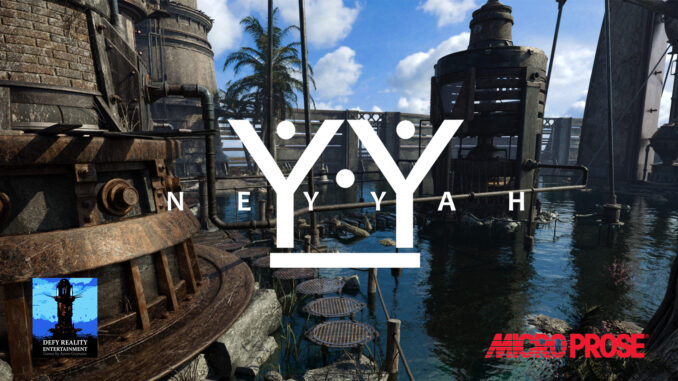
Original interview with Aaron Gwynaire – solo developer of point and click game Neyyah.
Could you introduce yourself? Where are you from and what is your videogames history?
My name is Aaron Gwynaire, originally from UK, working between England and Western Australia. I am the sole developer at Defy Reality Entertainment, creating the first person point n click adventure game Neyyah.
I have always been a creative, whether that’s recording, writing or performing music, writing stories / books, and creating art … painting, drawing or 3D work. Game development became an interest of mine in my early mid teen years: the idea that I could encompass all my creative interests into one thing really appealed to me! It’s a very fulfilling experience.
How you got into programming?
So … that’s an interesting one! I started off getting straight into CG / 3D modelling when I was younger, at the point where I really felt invested in pursing game development. I knew I had to try learning code, and researched the hell out of it back then. Mind you – mid 2000s was a time when dial up was a thing, and so internet wasn’t so easily accessible. I think I used machines at the school to do a lot of research too! In fact, I taught myself everything I needed to know, as 3D modelling wasn’t something covered in school.
When it came to programming though, my brain just didn’t click with it … I think it just wasn’t visually stimulating enough, and I would switch off, or have a lack of interest in anything code related. I remember trying a program called DarkBASIC, which was like VisualBASIC but for 3D game creation. I got as far as generating ‘Hello World’ on the screen and that was it!
From there, however, I did pick up programs such as Adventure Maker and eventually Visionaire Studio 5, which is what I use now to construct (I prefer using the word construct, rather than program, as you’ll see later …) my current ongoing project Neyyah. AM enabled me to learn the basics of programming principles, making things happen to create a screen to screen point n click game such as the 1993 Myst or Riven games. This framework was generated in a much more visual way, and continues into Visionaire Studio 5 – generating action parts on each ‘scene’ of the game, enabling me to generate sounds when I need, to get the player to move forward, look up or down, turn left or right, or even zoom in on certain parts of a scene, and what cursor should be displayed, etc.
For me, Visionaire Studio 5 is perfect for my visual brain, while also enabling me to create the type of game I want to create. While Visionaire is widely used for third person classic point n clickers such as Broken Sword, Monkey Island and The Longest Journey style games, it’s been a joy working with the engine to create a screen to screen Myst / Riven style navigation system!
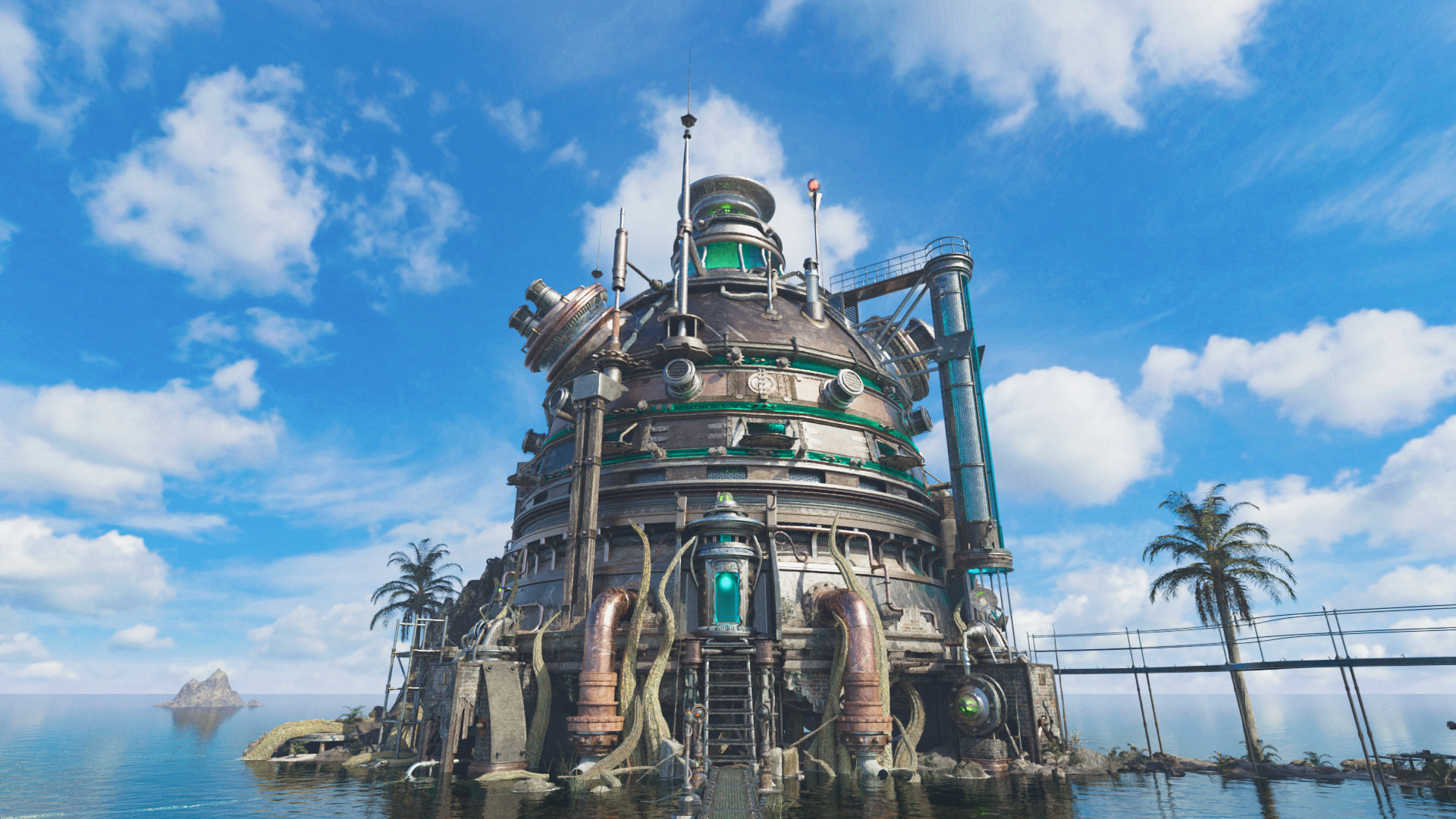
Did you work in the game industry in the past / studied game development or you are self-taught man?
I have never worked within the game industry. I progressed further with my art and music studies into further education after leaving school, and nearly took game development into Uni but went down the work route instead, and later moved to Western Australia at the age of 20, where I pursued more of my music. At this point, I had a small demo behind me from a game I’d started around 2011 called Portals: Journey to the Lost Pearl Islands, which would later become the spring board for Neyyah!
I taught myself 3D modelling during high school, using a program called Anim8or which is still available to use! A great freeware program which gave me the basic knowledge and understanding of CG / 3D modelling. Having always loved working with clay or plasticine as an art form, it was a natural progression for me to get into 3D modelling – just working in a virtual space!
I was the only student in my year who used the teacher’s laptop to create a 3D reconstruction of an old Elizabethan mansion for an Art GCSE practise exam – I was about 14 / 15 at the time!
I took art and design further after high school, studying an Art Foundation Course at college, which gave me my first taste of Adobe Photoshop, plus some Adobe Premiere work in green screen keying and being able to use my 3D modelling skills further in animation classes. But most of my work to date is the result of self-teaching – especially Blender …
2018 was when I first jumped head first into the 3D modelling program, Blender, which I currently use to create Neyyah’s world. It was a huge turning point. Suddenly, I could use path traced rendering, churned out by the magical Cycles rendering engine, integrated into Blender. There was a point where I did a test render and there weren’t any textures on the 3D model I had just created within the software – just to, you know, test the waters, so to speak – but when that render began (the lighting kicked in, and the pixels started formulating to generate a clear view into the Blender world …) I instantly thought, ‘This reminds me so much of Riven!’. The same tone, cast of shadow … There was a realism in this I had never seen before in other 3D programs. I had used Anim8or for a majority of my work in 3D as I’ve already mentioned, but had also dabbled in Bryce 3D in my teens as well – to no avail. Side note: I had tried Blender when searching for 3D programs to learn and use in my teens, but with lack of internet access, the program looked so overwhelmingly complicating, scaring the hell out of me, and so I didn’t take it any further.
Little did I know, later down the years, I would return to Blender and it would set a course in my life which would lead me to where I am now: a full time game developer, creating a world for people to experience and explore, with a publisher behind me!
What videogame genres you like the most and why?
I love all sorts of video game genres, and will go into more detail later about certain games which have really inspired Neyyah. I specifically love adventure games, but also love the third person action games such as Tomb Raider, and other tactical based games such as Desperados: Wanted Dead or Alive, and Stronghold. The main appeal for me in any game is the story and the world in which it’s set. I’m all for world building. While Neyyah is a more slow paced, take-your-time style of game, I do love those faster paced style of games too – having had a sweet tooth for Need For Speed games in the past as well. Honestly, I create games more than I play them these days, and if I do play them, I am analysing the heck out of them to see how things have been put into place, to see what works, etc.
Did you release any game in the past or is Neyyah your first?
I have never released a game before. I have started various projects in the past, where I have gained more skills and knowledge along the way, but never managed to complete anything. I managed to finish a demo for a game I was developing around 2011 called Portals: Journey to the Pearl Islands. I used Adventure Maker game engine at the time, and it was a great achievement making something I could play from beginning to end. It was the first level of the game, and I never ended up finishing it, due to other commitments.
This game would later help spring board the world of Neyyah into action!
Neyyah will be my first commercial release. I started the game in July 2018 and have never looked back. It’s only grown and grown ever since, and continues to strengthen over the years of development.
Could you describe the genre of the current game and tell our readers what the story will be about?
Neyyah falls into the first person adventure genre. You play as yourself in the game, and explore the world through prerendered 3D graphics, point n click screen to screen navigation like in the 1993 Myst and Riven games. Neyyah naturally started to feel very cinematic, and along with live action character sequences (having real life actors portraying the characters of the game) the emphasis swayed heavily towards story and world building elements, setting the core for Neyyah’s soul. Puzzles came out from this, which flow as natural obstacles throughout the world, woven into the history and structure of the world.
I try not to give too much away regards Neyyah’s story and have not revealed too much about the characters either.
Basically, Neyyah takes place in a world torn apart by betrayal and shrouded in secrecy, and not everything is as it seems … You are pulled from your every day life and thrown into another world, ending up in a place called Olujay where you are greeted by a man named Vamir who is head scientist on Olujay and needs to get you to Neyyah urgently! Upon arriving on Neyyah, things don’t go to plan and you end up stranded on Neyyah with no way to return to Olujay … Outside contact is cut off. You have no choice but to wander the islands of Neyyah, travelling through various portals to encounter the remnants of an ancient world, bound by the ghosts of a tragic past and now overrun by the crazed Olujarian leader, Smollax … Learn about the world of Neyyah, uncover Vamir’s research upon Neyyah and help rescue two worlds that have been ripped apart. Your choices will help shape their future – as well as your own.
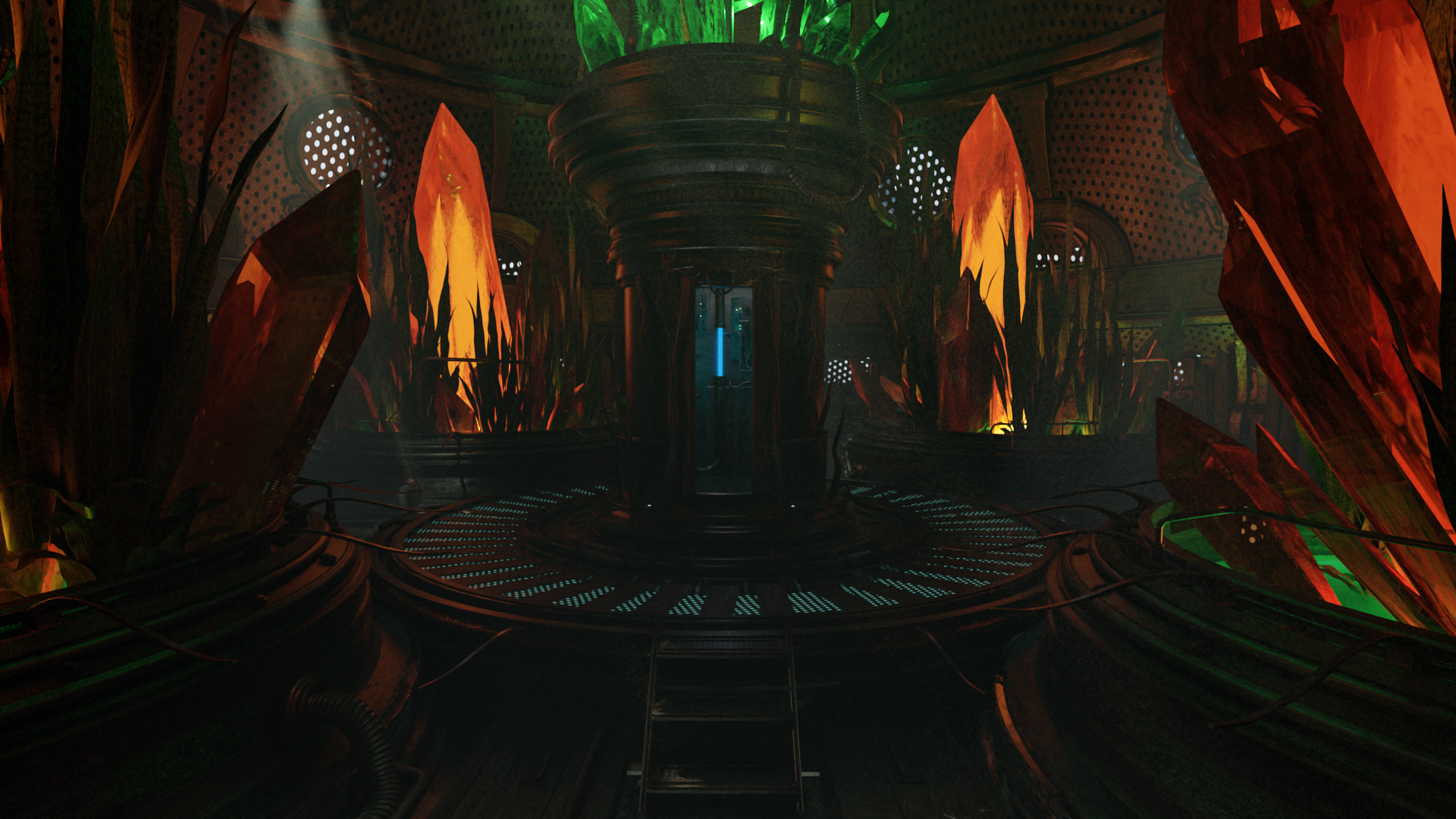
What interesting gameplay mechanics you implemented to stand out?
Right from the start, I knew I wanted to go prerendered point n click screen to screen like the 1993 Myst and Riven games … I have always wanted to create a game like this, so it was natural for me to fall back into this flow, after pursuing my music for years and getting back into game dev. This in itself makes Neyyah quite different to anything being made right now. Most adventure games coming out seem to be either third person point n click (pixel art based, hand drawn …) or first person free roam games. Neyyah is a 2D point n click game, though includes prerendered 3D graphics – path traced graphics, too, generating a huge amount of photorealism, clarity and believeabiliy. But this also lends itself to great accessibility, in terms of not requiring massive expensive hardware to run the game either. This style also provides great suspense and shock value in the ways scenes are composed and delivered throughout the game.
Gamers who love their inventory based point n click games will also find Neyyah appealing, as while it is heavily influenced by Myst, Neyyah makes use of three different inventory systems: your main inventory for items such as keys and other objects found within the game, plus an inventory called the ‘Payeeta Case’ which holds specific items in the game called Payeetas, and then there’s a Maps and Journals inventory, which holds guide maps and journals / books the player can pick up in the game world and refer to anywhere during gameplay.
There is also a transitions option within the game, which enables the player to snap straight to each scene, without any fade – great for getting around faster, too. Then there’s three other options: Speed, Neutral and Relax. These change the fade speeds between transitions, enabling for more cross over between each scene you click too – which, for me, creates more of the effect of having moved to another point.
While keeping to the original 1993 Myst and Riven screen to screen navigation, I am also including a lot more fmv sequences within the game through an option called Journey Mode. This enables the player to watch prerendered FMV animations between transitioning up or down stairs, ladders and other points within an environment. This enhances immersion as you progress through the game world, inspired by other games such as Schizm, Reah and the Cryo’s Atlantis games which had such FMV sequences throughout gameplay.
I am currently recording the music for the game, and this involves getting everything implemented into the game for an option called Music Lover … This option enables the player to have more music during gameplay, eg. In places which by default only have sound ambience playing. Personally, I love the space between music beats and the generic ambient sounds of the game world, breaking apart locations which can be enhanced by having their own musical themes / motifs. However, I also know that a lot of gamers love music in games, so this option provides this!
The navigation cursors are very similar to the 1993 Myst and Riven, and many other point n click first person games from the 90s / early 2000s. You have your classic forward, left and right cursors – but there’s also other cursors, indicating when an item can be picked up, or zoomed in upon, and there’s an extra touch of having forward-left or forward-right cursors, which is inspired more by the Rhem games! This more clearly outlines a forward direction that the player may want to take. The cursor system is a lot more detailed, clear and defined than it was in Riven, avoiding any frustration with trying to click everything on screen to see what can be interacted with – however, observation and world knowledge is still a must in being able to understand and progress forward in the world of Neyyah.
The cursor system also lends itself to another option in the game called Faster Travel, where the player can skip nodes to be able to get around faster within the game world. Unlike a zip mode, this can be activated at any point and you can get around faster straight away, without having already traversed that space!
All these options and mechanics help bring different shades of colour to the gameplay of Neyyah, providing a variety of ways to get around and play the game!
Screenshots reminded me of a classic point and click game Myst mixed with a Benoit Sokal’s atmosphere. What was your inspiration?
Neyyah takes a lot of inspiration from various angles – my own personal life, and movies, music and games I have enjoyed over the years.
First of all, Neyyah began development in Western Australia. Originally from England, I definitely drew from the coastal areas I had grown up around – Martello Tower defences, forts and other rustic weathered aged places in Suffolk, England. But the heat, climate and warmth of Australia is something very much evident throughout Neyyah. I wanted it to be a sunny warm place, and this also coincides with the way Riven was portrayed. This game is a big inspiration. The colours and tones seen in Neyyah lend themselves to Riven’s colour palette – my focus being desaturation, aiming colours towards the grey scale for a more realistic look, rather than anything too vibrant and poppy.
Tomb Raider is another great game I enjoyed throughout my life, and while I don’t take so much inspiration from the art style, the same sense of adventure and isolation found within the original game is something I definitely drew from when designing Neyyah – although perhaps on a more subconscious level. Those first three original Tomb Raider games were hot favourites of mine a s a child.
Other inspiring games include Dragon Lore II: Heart of the Dragon Man, making use of prerendered visuals and more fmv transitions, while other games such as Might and Magic 7: For Blood and Honour and Robin Hood: The Legend of Sherwood Forest have been a source of influence for their sense of adventure, exploration and also musical scores! I am the sole developer of Neyyah, so I don’t only focus on art based inspiration but also gameplay, sound, story, puzzle and music inspirations too. Broken Sword games definitely came to mind as I started laying down tracks for Neyyah’s score, where I use a Yamaha PSR E463 keyboard to compose and record the OST.
While creatures are modelled and animated for the game, characters are being filmed as live action acted sequences! This definitely harkens back to the old fmv games of the 90s and early 2000s. It makes sense to me that if Blender can provide very realistic looking 3D renders, along with a bit of imagination, design and some great Photoshop post editing, then real people should be in this world to make it even more believable and immersive!
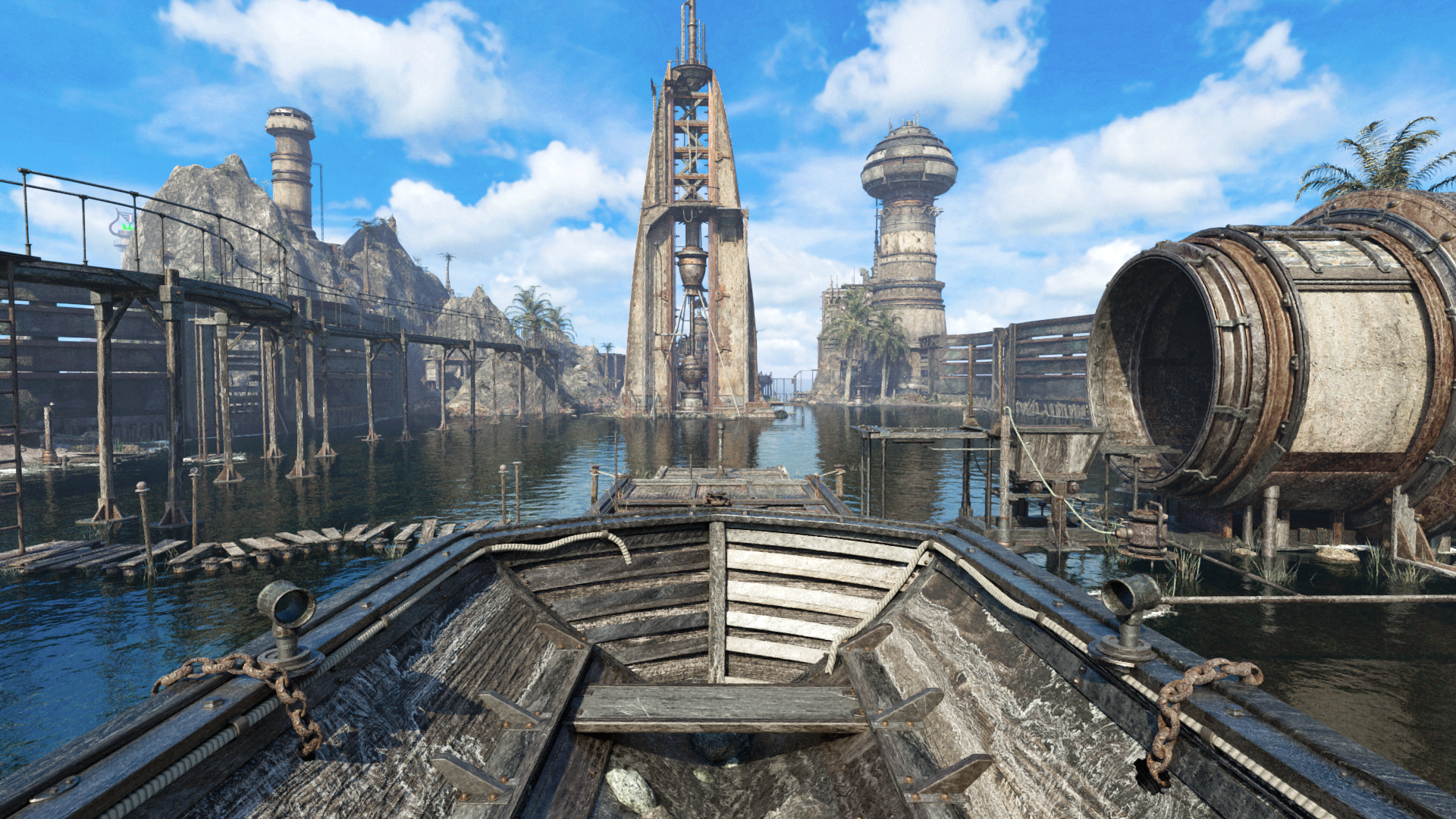
You are developing solo or do you hire freelancers to help you with assets?
Originally, I started out completely solo! I am still the sole developer of Neyyah, creating all of its story and puzzles elements, the 3D artwork, concept artwork, sound design, music and engine work. However, as time went on, I also gained assistance from other talented folk.
One instance early on was working alongside Blender artist Zachary Macintyre to get Neyyah’s ocean shader to look how it does now within the game. This was a combination of what I had set up in Blender at the time, and some of the work he had created in Blender. This was back in 2018.
Fast forward, I have also had help with Visionaire based work – the UI within the game came to life with help from Christopher Summer, and the music / sound work wouldn’t have been possible when it came down to actually getting it all to work within the engine if it hadn’t been for Simon on the Visionaire discord server.
While also supporting Neyyah from the get-go and fine tuning early story / plot elements of the game, my wife Nanci has also been involved in script editing, assistant direction throughout Neyyah’s live action sequences (organising the day of shooting) while also manufacturing costumes from my own designs. It’s been wonderful working alongside each other, and we definitely plan to do this more into the future through Defy Reality Entertainment. Exciting times ahead!
I also work alongside artists from my publisher Microprose who help with bringing to life the creatures and VFX for Neyyah! I create the concept art and profiling of each creature within the game, as well as directing the scenes which they will appear in, and Microprose take care of the modelling, rigging and animation aspects of the design!
What SW you use to make the game (render, sound, programming/engine…)?
The main softwares I use to create Neyyah are Blender and Visionaire Studio 5. These provides the tools to create Neyyah’s world, generate the renders and implementing them into a build within Visionaire Studio 5 game engine. Visionaire has been amazing to work with. It’s making Neyyah a reality! I remember seeing everything come to life and become interactive during the early builds … It was such a great taste of what was to come, and seeing as Adventure Maker was no longer an option due to a lack of support for the engine’s development, it provided new challenges to make Neyyah work.
Other softwares include Adobe Photoshop – a big tool in nailing Neyyah’s overall look! I also use Sonar Cakewalk Platinum to bring to life Neyyah’s sound and music, recording sound through ‘MOVO’ – my trusted Tascam recorder with a Movo wind buffer – and then mixing and editing within Sonar Cakewalk. Music is performed on my Yamaha PSR E463 keyboard, and recorded into Cakewalk where I bring the music to life and give it that Neyyah touch.
Audacity has been very helpful to with pitch and speed changes within sounds and converting files to .ogg which Visionaire reads. I also make use of smaller programs such as XnConvert to convert Neyyah’s artwork from .png to .webp files, readable within VS, plus SQIRLZ Water Reflections to generate animated overlays for Neyyah’s many ocean scenes!
I work from two machines, both Ryzens with 64 gb RAM each – one is my main computer, used to create the game AND render in the background, while the other machine is used specifically for rendering – constantly. My computers are always on, day in, day out – night in, night out.
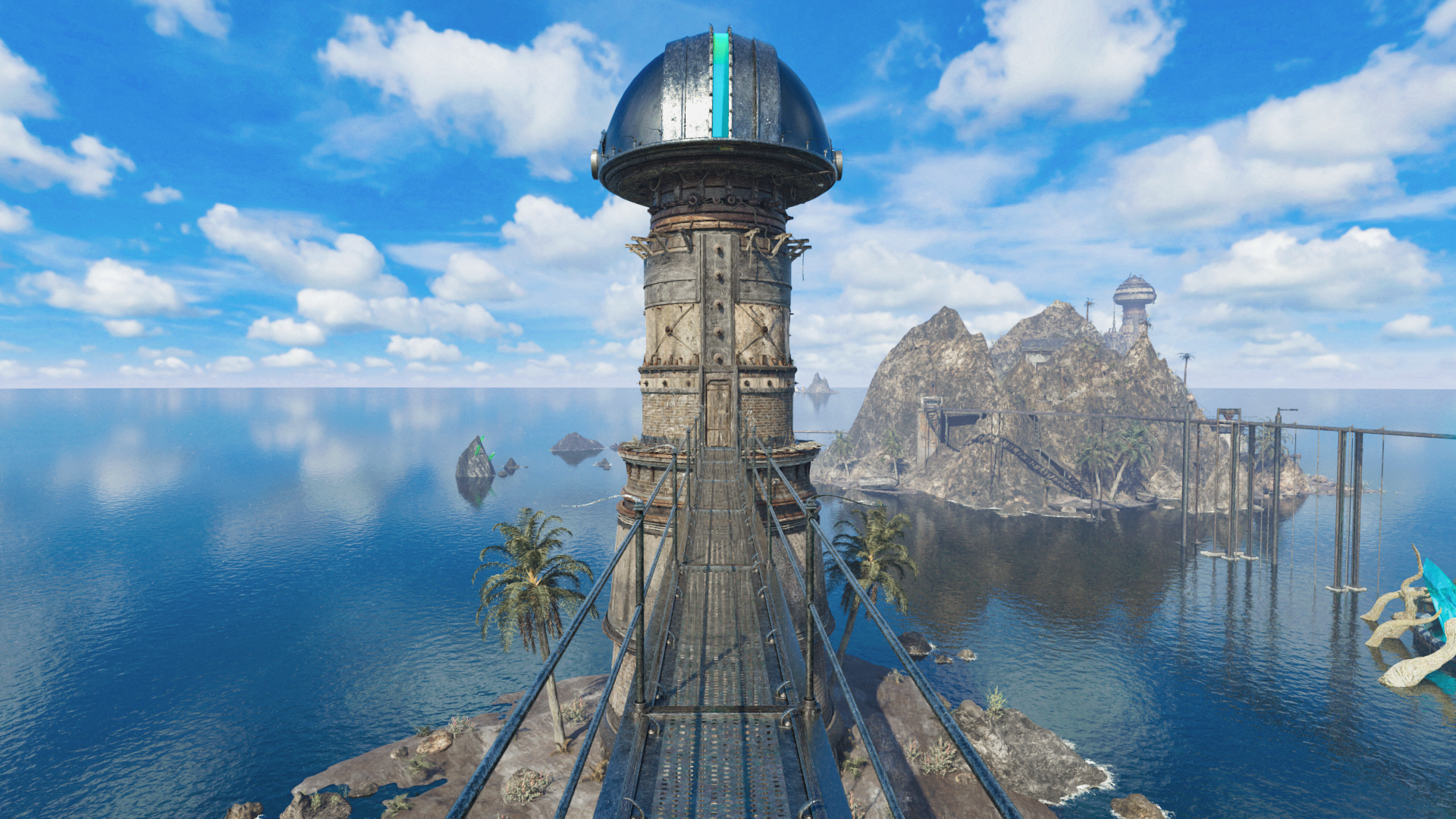
Do you have any financial support or you invest your own money?
Originally, I worked from home as a music teacher, and worked on Neyyah while my wife Nanci also supported me majorly with the teaching. Patreon came about in 2019, which definitely helped fund the game and enabled me to interact with my audience through sharing exclusive behind the scenes content and rewarding patrons with video call meet ups, signed desktop wallpapers and more! (Patreon still exists today, so definitely check this out! www.patreon.com/defyrealityentertainment). Then, while working as a carer, I gained the interest of Australia based publisher, Microprose. A superb memorable milestone in Neyyah’s development – late 2020. January 2021, I went full time on Neyyah, under Microprose who fund Neyyah’s development. A dream come true!
How long have you been working on Neyyah?
I started Neyyah in July 2018, so nearly 5 years in development! It’s been a wonderful journey!
Do you have a Publisher? If so, who will publish the game?
Yes, I do have a publisher. They are Microprose, and I signed with them back in early 2021.
When it comes out and will be there any physical version?
After the initial Steam release, down the track the plan will be to release a physical edition of Neyyah through Microprose, and maybe even looking at special edition boxes too!
What is the expected price of the game?
There hasn’t been any discussion regards Neyyah’s pricing yet.
Where we can track your progress and get more information about the game?
Neyyah’s progress is plastered all over various social media platforms.
Facebook and Twitter are the main bulk of sharing Neyyah’s work, while Instagram is a great visual follow on and Patreon offers more exclusive content, such as having your name on credits of game as a Patreon supporter, access to signed desktop wallpapers given out on a monthly basis, plus sharing more of the in depth workings of the game development process – and sharing content early before it’s made public! The Youtube channel offers a wide range of dev logs which explore my work in Blender, Visionaire, Photoshop, Cakewalk and can be very valuable in learning a new or thing or two in modelling, sound design, music production and more!
Check out the links below:
Facebook: www.facebook.com/DefyRealityEntertainment
Twitter: www.twitter.com/NeyyahGame
Instagram: www.instagram.com/defyrealityentertainment
Youtube: www.youtube.com/AaronGwynaireGameDev
Patreon: www.patreon.com/defyrealityentertainment
Is there anything else you would like to point out or tell to our readers?
Neyyah isn’t just a game to me. It’s a world. A way of life. It’s an entity with its own soul, and seeing it grow and having a beautiful community stand behind the game’s development, eager to jump through the portal the minute they can get their hands on it is a mindblowing – I am so grateful and lucky to be doing what I do, to love my work and bringing joy to others – even before the game is out!
I have some cool reveals coming out down the track. Neyyah has already gained its first fan art with artist Mick Meier, so stay tuned for a showcase of his amazing work soon. Neyyah recently revealed its first musical score here: https://www.youtube.com/watch?v=KE_dSIJCXck. Plus, a demo will be set for release later this year! The first time players can experience the game, adventurers can wander into Neyyah … Definitely wishlist / follow the game on Steam for announcements to come! https://bit.ly/3w3R0jb
Looking forward to sharing the world of Neyyah with you!
Thank you very much for all the information and good luck wit Neyyah!

